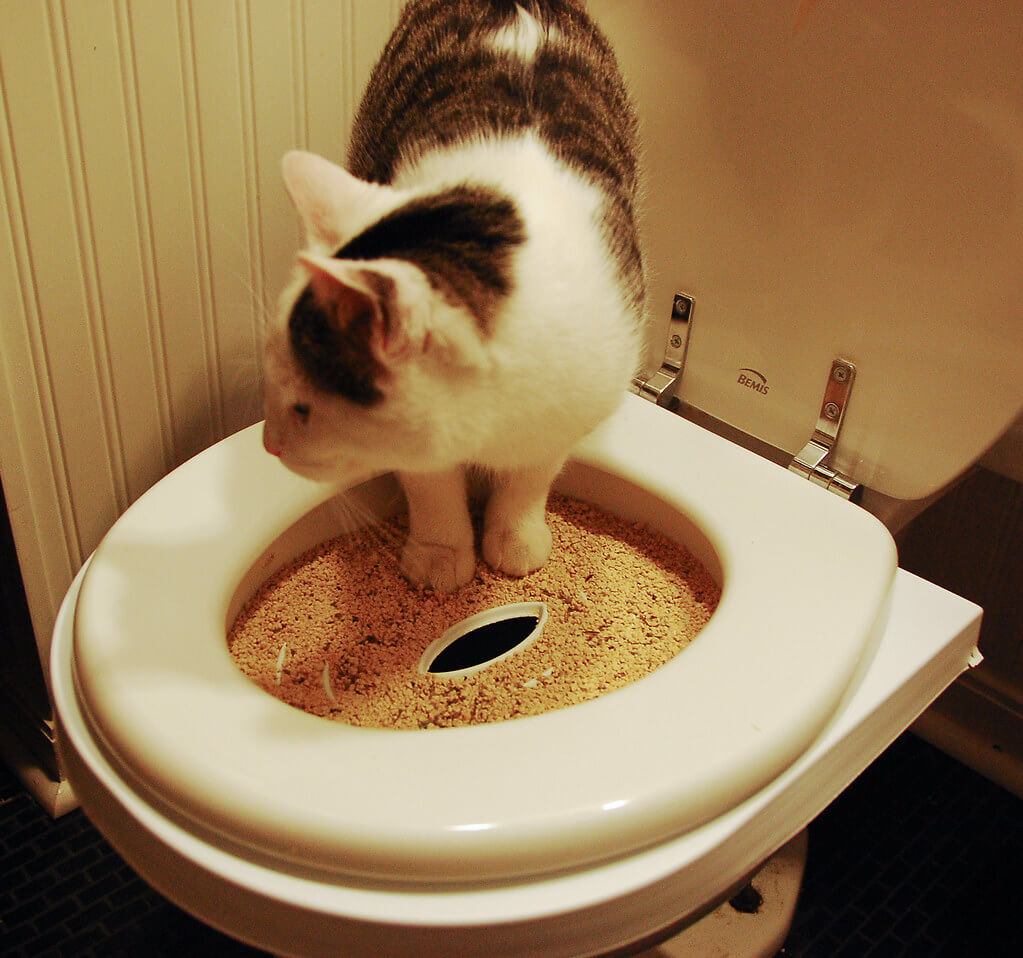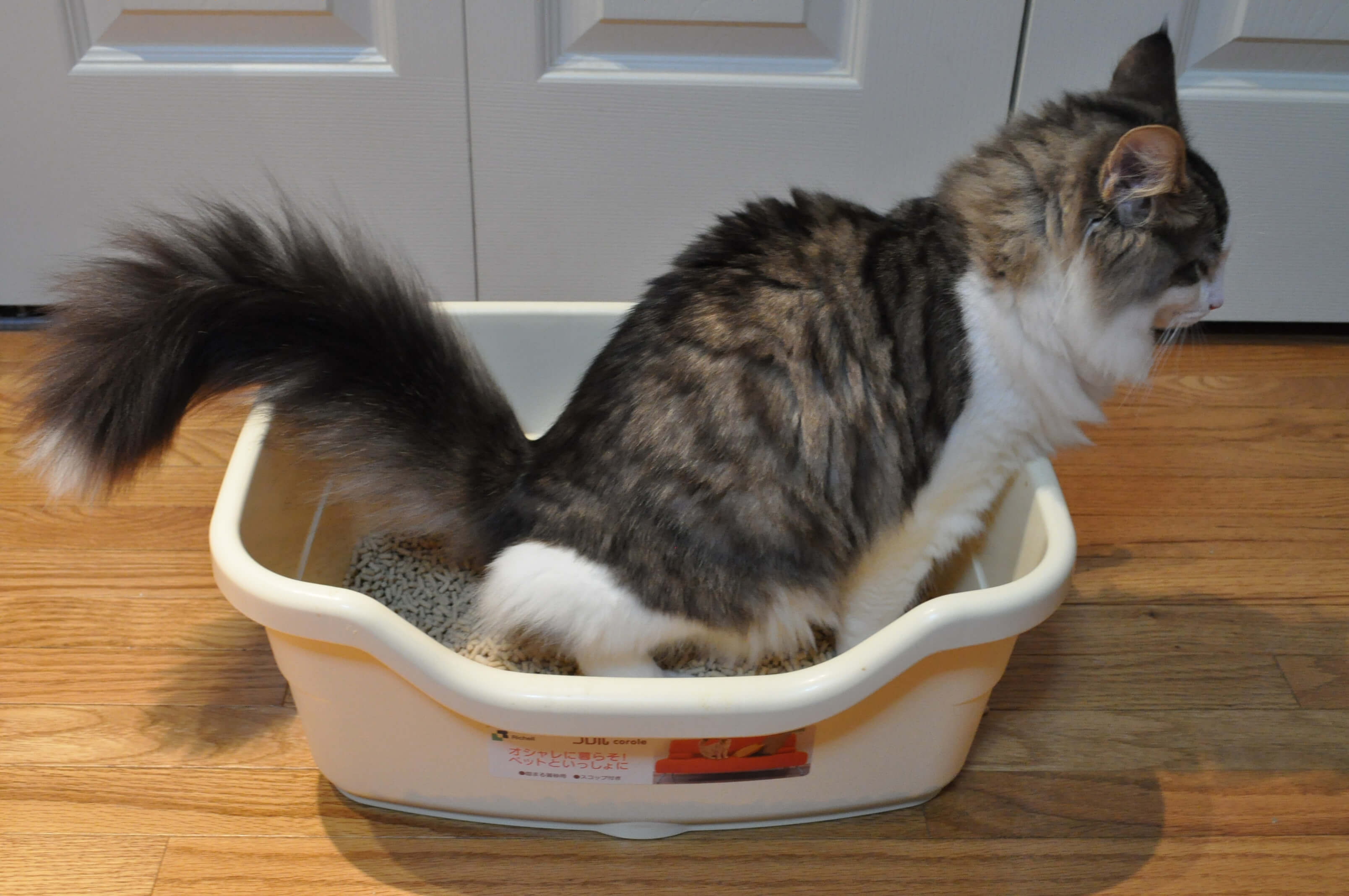How to toilet train a Kitten ?
Kittens and cats are so cute and it’s a blessing to see them grow up in your house. However, every coin has two sides. With their infinite cuteness, we inevitable have also to deal with the gross aspect of their mess, be it their hair shedding or littering.
In this article, we will learn how to toilet train our kitten or cat.
A good thing is that, kittens and cats are naturally inclined to cover their faeces and pee. So, they will automatically be inclined to use the litter box that you have put in your house. Cats are smart creatures, and here it works in our favour.
But even then, it will be a good idea to train them at a young age, as otherwise you may have to deal with the mess they will create in your house. Moreover, in my experience, it’s a bit harder to potty train an old cat, as compared to young kittens.
Well, enough chit-chat. Let’s begin.
 Table of Contents
Table of Contents- Tips and Tricks to toilet train a Cat
- How to train a Cat to use the toilet and flush?
Tips and Tricks to toilet train a Cat
Bonding with your Cat
The first step in any kind of animal training is to first of all develop a bond with your pet. You should make sure that your kitten loves and trusts you.
Win them over with your affection and treats. Unlike dogs, it won’t be that easy. Cats do not trust anyone very soon. You have to make an effort and earn their trust.
This is a prerequisite to toilet train your kitten. Once, you have done this, we may start implementing our toilet training techniques.
You should first of all get a litter box, litter scoop and litter.
Get a Litter box
Get a box that is not very deep, no doors, no steps - it should be easy to access and use.
For small kittens you may even start with cardboard carton lids as a cheap substitute for litter boxes (e.g. the lid of your shoe box). As these are pretty shallow, kittens will not find it difficult to get into the litter box. And as these are dirt cheap, you may just throw them after some days, and then use a new one. No cleaning hassles.
Once your kittens get bigger in size, say when they turn 3-4 months old, you may buy more sturdy plastic litter boxes for them. Though they may save you from the headache of arranging new cardboard litter boxes again and again, you will have to clean and wash them on a regular basis. Cats do not like using bad-smelling, unhygienic litter boxes.
You should have litter box in the same room, where the kitten is living. Otherwise, it may find some other place for that purpose. If you have a lot of kittens, then place multiple litter boxes, maybe one in each room.
Make sure that the litter box is not more than 9-10 feet away from where it resides. So, while you are still potty training your kitty, confine it to a single room or a playpen. This way it can easily access the litter box whenever it wants.
Corner of a room is the best place for a litter box. It has been observed that kittens/cats prefer to go to a corner for their business.
Make sure that you do not keep the litter box very close to the place where they eat or sleep. Believe us, they will not appreciate it! These guys can throw some pretty dramatic tantrums when it comes to hygiene.
 When to get a litter box for your Kitten?
When to get a litter box for your Kitten?Very young kittens, say those younger than 3 weeks, cannot use litter box. They have to be stimulated to do their business. Their cat mothers do it by licking their anus. However, if you are raising a kitten without its mother, then you may do the same using a soft tissue/cloth.
Preferably, stimulate the kitten while keeping it over the litter box. This way it will make an association of toilet/potty with the litter box.
Get appropriate litter
As far as litter is concerned, you should get kitten-safe litter if your kitten is less than 2 months old. By kitten-safe litter we mean:
- Unscented litter (i.e. Fragrance free)
- Non-Clumping litter
Kittens, like most other animal babies, explore their environment by touching things with their mouth, nose and sniffing around. Scented litter may be hazardous to kittens if ingested, and clumping litter makes clumps if it comes in contact with any liquid (i.e. kitten pee).
Though you can use scented litter once your cat grows up and stops chewing on the litter.
 Note
NoteDo not keep bundled up clothes near your kitten, or anything that they can use to cover their potty/pee. Otherwise, they may start using that location, instead of the litter box.
If they have done it, make sure that you remove those clothes and wash them properly, so that no pee/potty smell remains. If a kitten can smell its pee/potty at some place, then it may use that place again and again for that purpose.
Make sure that your kitten gets inside the litter box and plays with the litter. If it does not, then put it inside it yourself, and then show it how to dig the litter (using your hands, or its paws). Soon it will understand the purpose of the litter box and how to use the litter inside it.
 Note
NoteIn some cases, kittens can be pretty choosy regarding the litter brand. So, if your kitten is constantly refusing to use the litter box, try changing the litter that you are using.
Especially, if you have rescued a feral kitten (a kitten born in the wild), then it may not even understand the use of litter box, as it may be used to using a more natural setting, a place with a lot of sand and leaves etc. So, you may try putting some sand and leaves in the litter box for such kittens.
Positive Reinforcement
Though you should never punish a kitten when accidents happen, do make sure to reward them when they do use the litter box correctly. Positive reinforcement works the best if it is given right after a favourable behaviour has been displayed.
So, give a treat to your kitten as soon as it is coming out of the litter box after doing its business. Not a heavy treat, as you should not generally feed an animal just after they have done potty.
Even better, just pet your kitten, or praise it in encouraging voice. That works like a charm. It will get the message that it has done something right. Cats are smart enough to repeat the actions that bring them rewards, affection and lots of petting!
Learn by Imitation
If you have a lot of kittens, some of whom have learned how to use the litter box, or some older cats that are already toilet trained, then other younger kittens may learn by watching them.
Bring the young kitten near the litter box and let it watch other kittens/cats use the litter box. It will pick up on that pretty soon.
Clean the litter box regularly
We cannot stress this point enough. It’s absolutely essential that you keep the litter box clean. Otherwise, your cat/kitten may even flat out refuse to use the litter box.
And the smell!
Some people have a misconception that cats smell. Well, unlike dogs, they don’t. But their litter box will sure smell a lot if not cleaned regularly.
Whenever you are feeding the cat, just glance over the litter box and scoop out the litter with the potty/piss. Throw it in the dustbin. A clean litter box will work as an incentive for your kitten/cat to use it more often.
How to train a Cat to use the toilet and flush?
Some people, prefer that their cat use the commode seat that we use (maybe in their spare bathroom). You may surely train your cat to do so.
Though it might take some extra effort on your part initially, but later on you will be saved from all the headache associated with litter box – getting litter, keeping it clean, scooping the poop and pee etc.
To do so, just place the litter box inside the commode. Make sure that your kitten can access it. You may attach some kind of stairs so that a young kitten can get up to the commode.
Rest of the training is the same as with any traditional litter box placed at the corner of a room.
Once your kitten grows a little, make a little hole at the centre of the litter box. It should not be very large, otherwise your kitten may fall through it.

With time, keep on increasing the size of this hole. Your kitten may seem perplexed a bit on some days. It will try to explore where that hole goes, peep inside, etc. So, be vigilant and monitor your kitten for safety purposes.
Within a few months, once your kitten grows into a cat, you may remove the litter box placed over the commode entirely. Your cat will still find a way to use the commode.
When it comes to flushing, I would consider that a little ambitious. But hey! You may achieve a lot through positive reinforcements. Worth a try!
Winding Up
Though every cat has its unique personality, we hope that these tricks and techniques will work on your kitten. Remember, it’s just a passing phase – necessary but temporary.
Once you are through with it, your kitten will no more be a bundle of mess. Rather, just a bundle of joy, as they are supposed to be.
Cats love cleanliness, they keep their fur clean, and their surroundings too. So, they hate mess as much as you do. All they need is a little push in the right direction.
